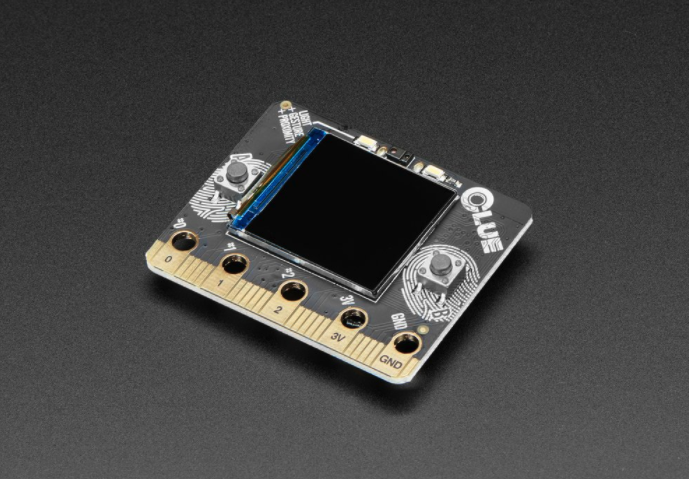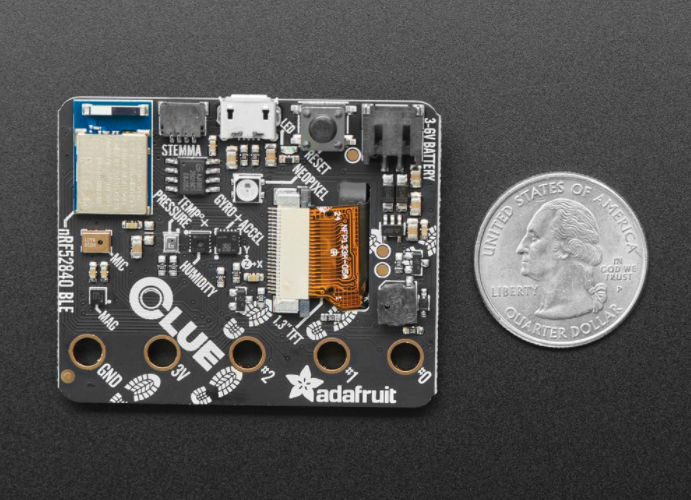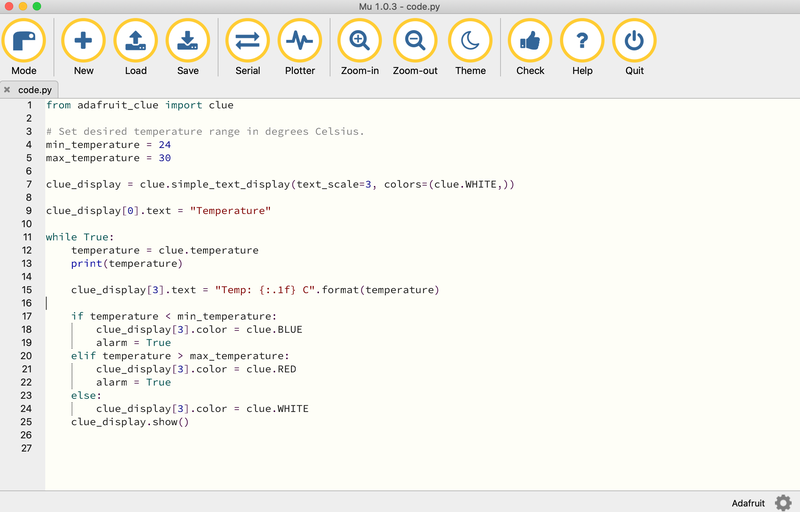Capturing Serial Output with Python
Many of the IoT devices do not have WiFi or 3G/4G connections. They are simple single-board devices that lack computing resources in favor of low power consumption, cost, and footprint. In which case, we can treat it as an extension to a computing platform (such as Raspberry Pi) as a sensor and capture the output via serial.
For example, I have been playing around with the Adafruit CLUE board that really packs a punch when it comes to the number of sensors it houses on a small form factor:


Image Source: https://learn.adafruit.com/adafruit-clue/overview
While it does have a Bluetooth chip on board, it was simply easier to capture the serial output from the board. For example, I can use this modified version of the script, https://learn.adafruit.com/adafruit-clue/clue-temperature-and-humidity-monitor, to measure and display temperature:

The print statement in the script will print the output to the onboard display as well as to the serial port. I can find the serial port on my computer:
$ ls /dev/cu.usb*
/dev/cu.usbmodem141401
Then use the following script to grab the serial output:
import serial
serial = serial.Serial('/dev/cu.usbmodem141401')
while True:
....output = serial.readline().strip()
....output_string = output.decode("utf-8")
....print('This is the serial output: ' + str(output_string))
Here is the output upon execution:
$ python serial_test.py
This is the serial output: 29.0111
This is the serial output: 29.0086
This is the serial output: 29.0061
This is the serial output: 29.0186
This is the serial output: 29.0137
This is the serial output: 29.0111
This is the serial output: 29.0186
This is the serial output: 29.0137
This makes it really easy to integrate the CLUE board with other small form factor computing devices that are more powerful, such as the Rasperry Pi.
I plan to spend a lot more time with IoT sensors and computers so let me know in the comments if you have some project ideas.
Happy coding!
Eric